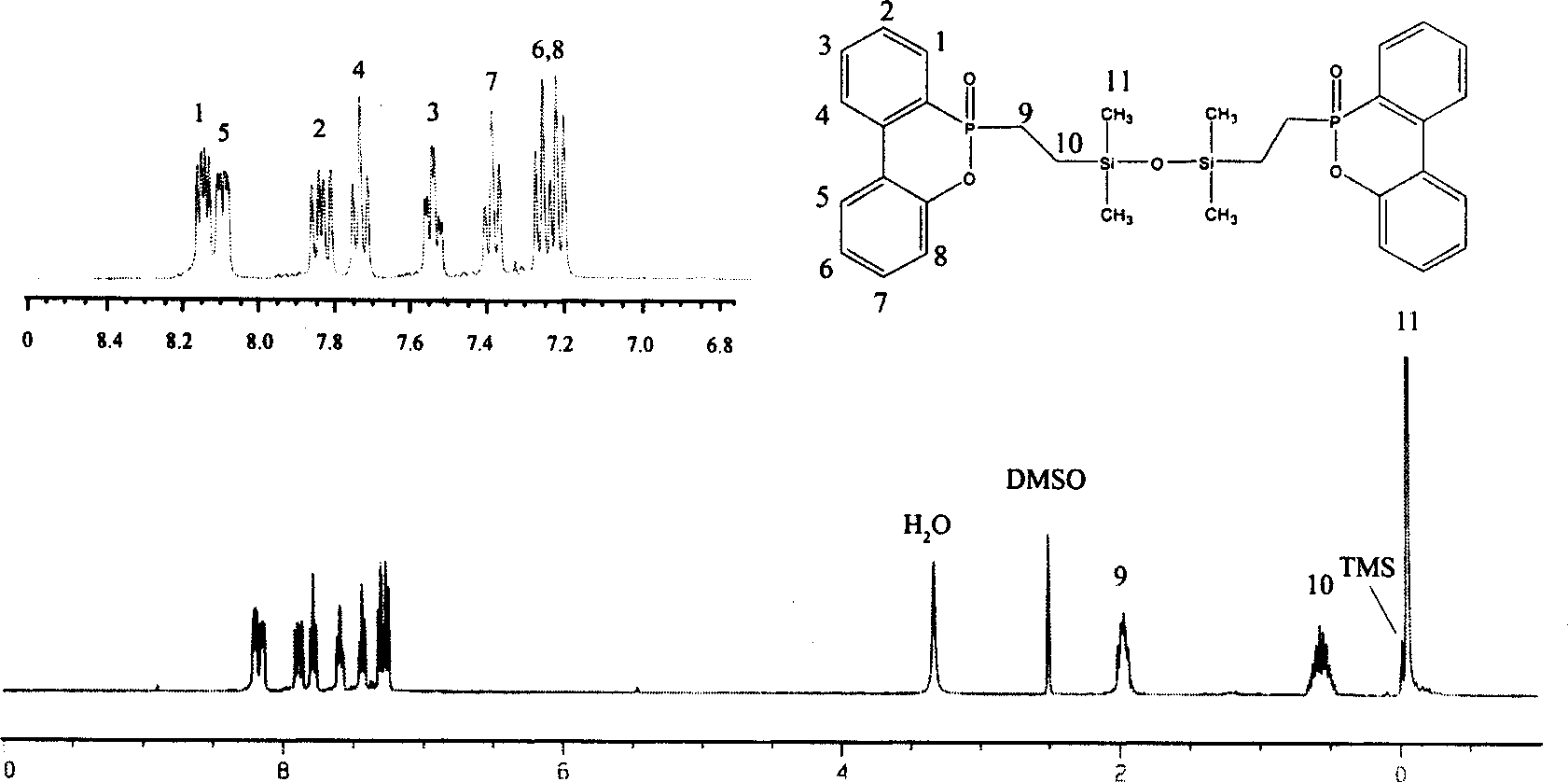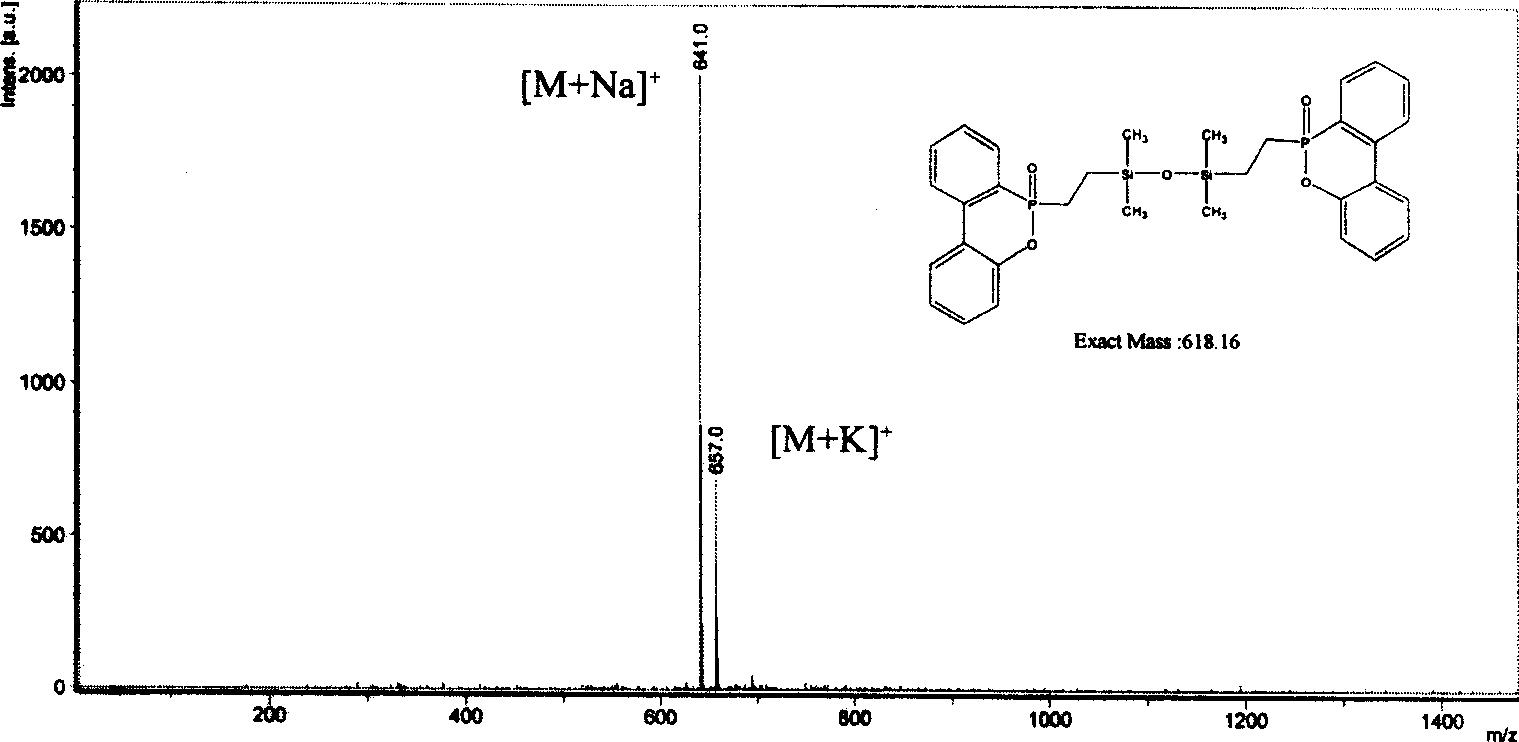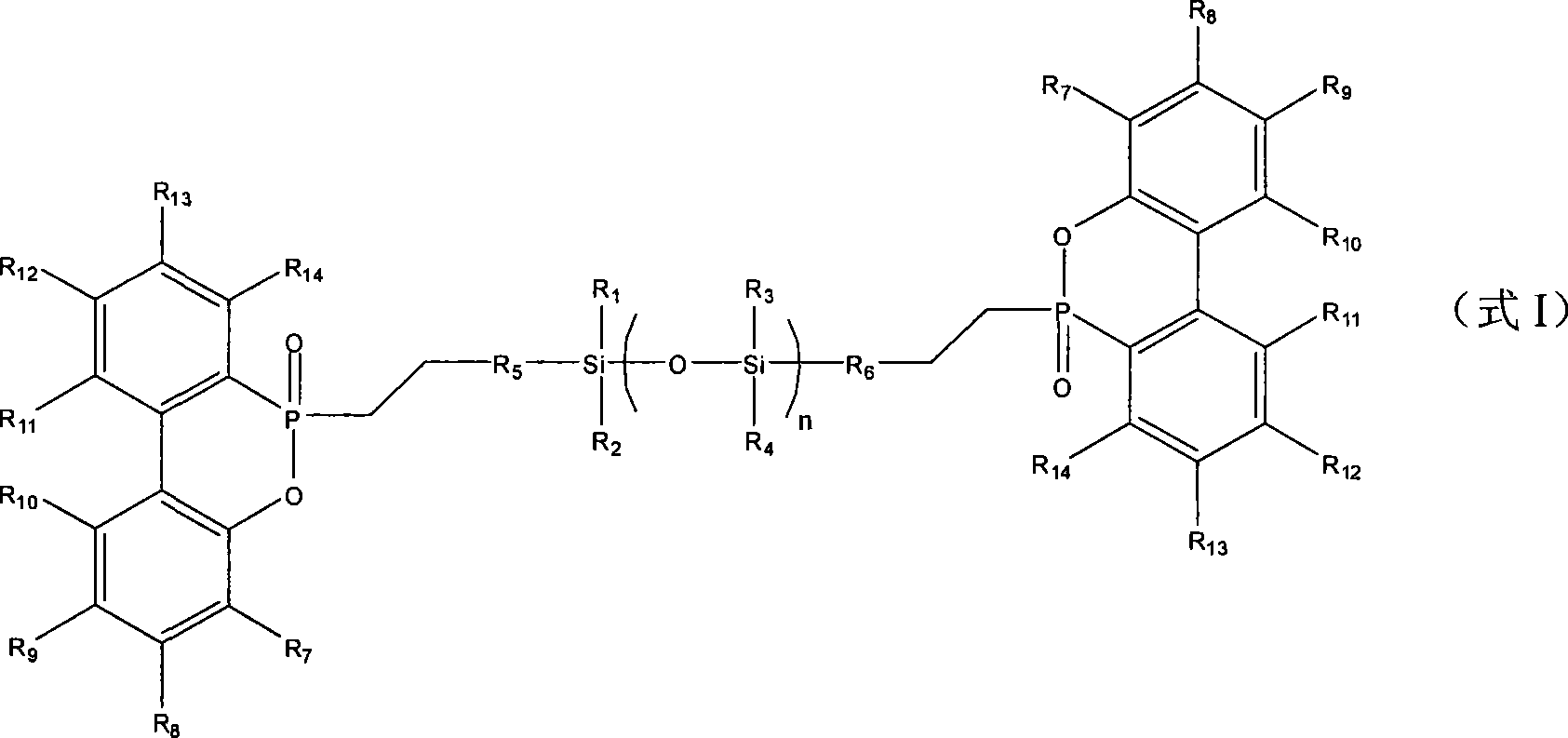Phosphoric organic silicon compound, preparation method and application thereof
An organosilicon compound, C1-C5 technology, applied in organic chemistry, chemical instruments and methods, compounds of Group 5/15 elements of the periodic table, etc., can solve problems such as endangering human health and environmental pollution
- Summary
- Abstract
- Description
- Claims
- Application Information
AI Technical Summary
Problems solved by technology
Method used
Image
Examples
preparation example Construction
[0025]The compound can be prepared by referring to the literature (Polymer, 39, 5819-5826, 1998), etc. It is obtained by condensing the starting material o-phenylphenol derivative with phosphorus trichloride to remove hydrogen chloride, followed by hydrolysis and dehydration.
[0026] The chemical structural formula of siloxane containing two carbon-carbon double bonds is shown in formula III:
[0027]
[0028] The preparation of this compound can be prepared with reference to the literature (Macromolecular Materials Science and Engineering, Volume 16, Phase 3, 67-69, 2000), by alkyl divinyl disiloxane derivatives and alkyl cyclotetrasiloxane in a certain Proportional mixing is obtained by performing an equilibrium reaction in the presence of a base.
Embodiment 1
[0031] 216g (1mol) 9,10-dihydro-9-oxa-10-phosphaphenanthrene-10-oxide and 93g (0.5mol) 1,1,2,2-tetramethyl-1,2-di Add vinyldisiloxane into a 500mL three-necked flask, add 5-6 drops of 25mmol / L tetrahydrofuran solution of chloroplatinic acid, and heat and stir to react under nitrogen protection. The controlled temperature is the reflux temperature, the temperature rises after reflux for about 8 hours, the controlled temperature is 160°C for 12 hours, and the low-boiling impurities generated in the reaction are removed by vacuum distillation, the temperature is lowered to 60°C, and washed with petroleum ether for 3 to 5 times to wash away Impurities generated during the reaction were distilled off under reduced pressure and then cooled to obtain a light yellow transparent solid (Compound 1).
[0032] figure 1 It is the proton nuclear magnetic spectrum spectrogram of compound one; figure 2 Its MALDI-TOF mass spectrum, the result represents a very pure product. The rest of the...
Embodiment 2
[0034] 216g (1mol) 9,10-dihydro-9-oxa-10-phosphaphenanthrene-10-oxide and 155g (0.5mol) 1,2-dimethyl-1,2-diphenyl-1 , 2-divinyldisiloxane was added to a 500mL three-necked flask, 5~6 drops of 25mmol / L palladium chloride ethanol solution were added, and the reaction was heated and stirred under the protection of nitrogen. Control the temperature at about 150°C. After reacting for 72 hours, remove the low-boiling impurities generated in the reaction by distillation under reduced pressure, lower the temperature to 60°C, wash with petroleum ether for 3 to 5 times to remove the low-polarity impurities generated in the reaction, and remove them by distillation under reduced pressure. After the solvent was cooled, a light yellow transparent solid (compound 2) was obtained.
PUM
| Property | Measurement | Unit |
|---|---|---|
| softening point | aaaaa | aaaaa |
| softening point | aaaaa | aaaaa |
| tensile strength | aaaaa | aaaaa |
Abstract
Description
Claims
Application Information
 Login to View More
Login to View More - R&D
- Intellectual Property
- Life Sciences
- Materials
- Tech Scout
- Unparalleled Data Quality
- Higher Quality Content
- 60% Fewer Hallucinations
Browse by: Latest US Patents, China's latest patents, Technical Efficacy Thesaurus, Application Domain, Technology Topic, Popular Technical Reports.
© 2025 PatSnap. All rights reserved.Legal|Privacy policy|Modern Slavery Act Transparency Statement|Sitemap|About US| Contact US: help@patsnap.com



